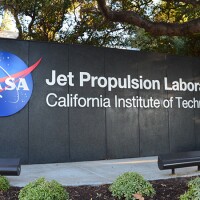Adam Steltzner: From Rocker to Rocket Scientist

Every superhero has an origin story and, perhaps, the same could be said for super engineers. In a talk at TedX New England, Adam Steltzner recounted the beginning of his own journey. Today, Steltzner is a renowned engineer with NASA Jet Propulsion Laboratory who led the team responsible for the Curiosity rover's successful landing on Mars. He's also the author of the book "The Right Kind of Crazy: A True Story of Teamwork, Leadership and High-Stakes Innovation." When Steltzner was 21, though, he was a bass-playing rocker in the San Francisco Bay area who was intrigued by the movement of the constellation Orion on his trips back and forth to gigs.

As Steltzner recalls, one thing led to another. Once his interest was piqued, he took a physics course at a community college. But, the learning didn't stop with one class. He eventually studied his way towards both a job at JPL and a PhD. Steltzner's background is often highlighted in news outlets as unusual-- he had music aspirations, not scientific ones-- but that also makes him a powerful space evangelist. He's proof that you don't have to be a kid to have your mind turned on by science.
Steltzner's interest in space exploration didn't manifest until he was an adult, but he went on to make a big impact in the field. He was involved with a number of projects, including Galileo, which studied Jupiter and its moons, Cassinifor a Saturn mission and several Mars-related projects like Pathfinder, Spirit and Opportunity. Steltzner's biggest claim to fame, though, is with Curiosity. On August 5, 2012, Curiosity landed on Mars, where the rover continues to roam. Without Steltzner's contributions, this mission may not have been as successful as it has been thus far. In fact, without Steltzner, Curiosity may not have been able to land.
Last year, Steltzner was named to the National Academy of Engineering. It's a massive recognition for someone in his field and it came as a result of landmark work on Curiosity. Steltzer helmed the team that handled the rover's Entry, Descent, Landing (EDL) system, a nine-year challenge that remained a nail-biter until the moment the Curiosity touched down on Mars. As the Smithsonian notes, Mars missions have a history of failing. This one was compounded by the large size of Curiosity. As Steltzner points out in his TedX talk, Curiosity was heading to Mars to discern if there were any signs of life. In order to do that, though, the rover needed a lot of gear and that made Curiosity so hefty that the usual methods of landing this kind of spacecraft wouldn't work.
Steltzner and the team had to invent a new device. The sky crane, as it's called, brings the rover down to the ground before it detaches and heads back into flight. It was a difficult project and even Steltzner admits that he was in disbelief when the landing took place in 2012. He and the team won a Smithsonian Ingenuity award for this feat in 2013, Now, he's the chief engineer for the Mars 2020 project, an endeavor that aims to further explore potentially life-sustaining qualities of the planet as well as conducting research to aid future human missions to Mars.
Continuing research of Mars' past and present are part of NASA's future and it doesn't end there. Steltzner says he wants to get a lander on Jupiter's icy moon of Europa and that's a project that NASA has in the works now. Making this research possible isn't just a challenge for those who work in space exploration now. It's a job that will likely require the work of the next generation of scientific minds as well. Back in 2012, Steltzner said to NPR, "I grew up in an era where space was revered." Today's youth might face more challenges.
Studies have shown that, in comparison to other developed nations, U.S. students fall in the middle of math and science testing scores. Yet, how schools across the country are to teach science is a contentious issue. But, there is hope for the future of scientific research and space exploration in the U.S. Advocates like the STEM Education Coalition have been working to improve science and math education. Meanwhile, scientists have been taking their research into the halls of convention centers, bringing science news to pop culture fans. NASA hosts panels at San Diego Comic-Con and this year's Long Beach Comic Con will host a Space Expo that will feature JPL scientists talking about Jupiter and Saturn.
What's in store for scientific research and education in the U.S.? Adam Steltzner will discuss on "Town Hall."
This article was originally published on July, 26, 2017.


